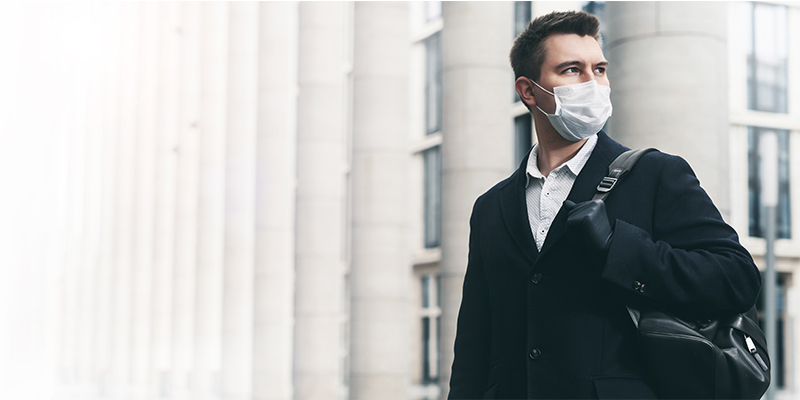At Gensler, we’ve been thinking hard about how to help our clients through these extraordinary times. As we’ve adjusted to the strange reality of the global work-from-home experiment, our clients have begun to ask what the future of work holds post-pandemic.
In order to move forward, we must rethink past workplace design paradigms, mine the present situation for lessons learned, and create smart, scenario-based road maps for how, and when, we return to the office.
The Workplace Context
We will eventually return to the workplace, but we may never return to “normal.” The pandemic is fundamentally challenging our ideas of workplace best practices. Will tech companies still seek to densify the workplace through open benching and shared collaboration spaces? Will law and entertainment firms double down on private offices? Will tenants still seek rich amenity offerings with enhanced cleaning and security protocols?
We cannot yet predict how the current crisis will affect workplace planning and priorities in the future, but we do know that many of the pre-pandemic workplace drivers will be rigorously challenged in moving forward.
Lessons from the Current Global Work-From-Home Experiment
As we face the COVID-19 pandemic, employees are working in unprecedented virtual ways. Today’s workstyles balance service to clients, virtual team collaboration, connections with colleagues, and focused individual work. Parents have added pressure of homeschooling or daycare. Others need ways to connect, especially if living alone.
Now is the time for engaging with employees and understanding what’s working and not working with today’s virtual work workarounds. Some practices may remain even after we all return to the workplace.
Road to the Workplace
In looking at the return to the workplace we are thinking about workplace resilience in three stages. The stages prompts companies to strategically rethink people and protocols, organizational culture and agility, and workplace impacts.
- People and Protocols – Before employees can return to the office, companies must assess existing protocols and educate employees on new workplace behaviors. Will employees need to be tested before returning? How often should facilities clean conference rooms? From childcare to parking demand – answering these critical questions is an important part of welcoming employees back to work and ensuring their safety once they’re back.
- Organizational Culture and Agility Analysis – As employees have worked virtually from home through the pandemic, new organizational structures and team dynamics have emerged. Which pandemic work-from-home practices should continue? How can teams be empowered to adjust to future pandemics or climate events? Identifying how to maintain culture and productivity through these uncertain times is key.
- Workplace Impacts – As businesses and employees adjust to new protocols and ways of working, it may prove necessary to redesign spaces to better-support the “new normal.” Are conference rooms sized correctly? Is there signage to limit the number of people gathering in social spaces? It will be important to rethink how, why and where we use space.
Future of Work
In the long term, we envision a workplace that will be agile to serve the functions of the organization. Four potential scenarios for the future of work include:
- Seasonal Mobility – Is it possible for companies to plan for office-wide mobility seasonally (i.e. California fire season, Florida hurricane season, global flu season, etc.) but otherwise maintain “business as usual”?
- Functional Team Mobility – What if instead of individuals working from home on a daily/weekly basis as job functions allow, whole teams or departments worked from home on a monthly basis as project cycles allow?
- Office as Brand and Culture Hub – What if the office was merely a brand, culture and collaboration touchpoint, and the majority of employees continue to work from home or a third-place?
- Hyper-private Workplaces – What if the need to work predominantly in the office results in “hyper-private workplaces,” with more private offices, larger more enclosed workstations, and more personalized amenities in secure, non-urban locations?
The longer we work from home and are away from our clients and colleagues, the more being together matters. Building community, reinforcing our culture, and strengthening our relationships is still what the workplace is all about.
Elizabeth Brink and Arnold Levin presented a webinar examining “What Happens When We Return to Work?” as part of NAIOP’s Advantage Series: CRE Response to COVID-19. The webinar recording is available here. Visit the NAIOP Response: COVID-19 page for critical resources and knowledge to support you now.














